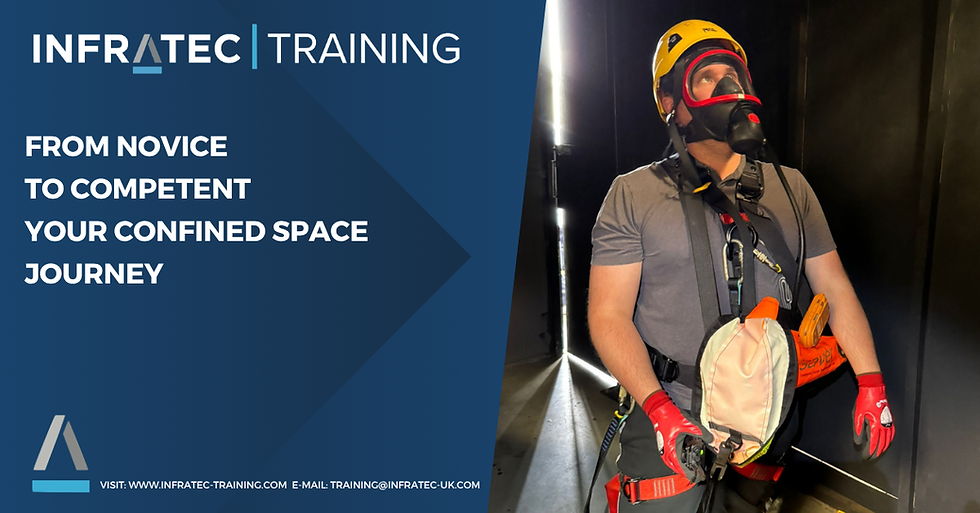What Equipment is Needed to Work at Height?
- leebullock25
- Sep 14, 2022
- 4 min read

Working at height is a term used to describe work that is carried out above or below normal ground level. In some instances, working at height involves the use of scaffolding, ladders and hoists. It sometimes means workers are lowered into sewers too. Working at height is regarded as a dangerous line of work, as if the correct safety measures aren’t in place and a fall occurs, it can result in injury or death. The most common industries where this activity is carried out includes construction and maintenance industries. Not only is falling a risk, but also the risk of others being injured by objects falling from height.
What Legislation Protects People Working At Height?

Within the Health and Safety at Work Act 1974, there are subordinate regulations named The Work at Height Regulations 2010. These regulations outline the responsibility of employers and people involved in the activities of working at height. It covers the planning and supervision required for those working at height, as well as the potential risks involved. Under the legislation it describes the importance of everyone involved possessing the right training, both practical and theoretical, to carry out the activities safely. Additionally, it says that those involved should know the right equipment to use and they understand how to use it safely and appropriately.
The use of safety equipment, such as collective protection and PPE, and the hierarchy of control is paramount in these activities. The hierarchy is to firstly make work unavoidable if possible, then to mitigate (using collective protection, like handrails). As the last line of defence, PPE like harnesses and fall arrest equipment is used. As well as this, the regulations clearly state the equipment should be properly maintained and inspected frequently and before any new activity.
What Equipment Is Used For Working At Height?

As outlined above, it’s absolutely necessary to have the right equipment at hand for working at height. During the activity, collective protective measures should be in place before personal ones, with the use of guard rails and nets in place, for example. The equipment that essentially prevents a fall should be priority though. The equipment that should be used for this includes:
Restraints systems
Fall arrest systems
Horizontal lifelines including lanyards and hooks.
Depending on the working at height situation, different types of personal protection equipment (PPE) is required. To determine what is needed for the job, a risk assessment is carried out. Based on the risk assessment, this will outline what PPE equipment is needed for the working at height activity at hand. It’s absolutely vital that all equipment is used in accordance with the manufacturer’s instructions, as well as in line with correct standards. To help choose the right PPE at hand, there is a hierarchy of control everyone involved needs to follow to ultimately prevent falls. The first consideration involves restraint systems, which prevents workers from reaching hazardous areas. The second consideration includes the positioning of equipment to support the worker. Lastly, before working at height, it is important to have the correct fall arrest PPE in place. These all combine to ensure all the right protections are in place for those at height.
What Is A Restraint System?
A restraint system is a form of PPE equipment which is implemented to prevent people who are working at height from nearing hazardous areas like sharp edges. A typical restraint system is made up of a belt or harness, carabiner or hook, lanyard and rope and an end anchorage. Such equipment ensures that there is enough support to the body and there is a connecting element to the anchorage. This type of equipment is essential for preventing falls.
What Is Work Positioning Equipment?
Work positioning PPE is to aid the position of the worker carrying out the tasks required when working at height. It is used in conjunction with fall arrest PPE, to support and suspend people so they are hands free. These types of equipment comprises, again, of a belt or harness, a work positioning lanyard device and a connector in the form of a carabiner or hook to an anchorage.
What Is Fall Arrest Equipment?
Fall arrest equipment is the equipment needed to ensure that if a fall occurs, the worker is safely stopped from falling. It usually involves a full body harness, a fall arrest lanyard and energy absorber, carabiner, and lifeline anchorage. Each element of this system ensures effectiveness if a worker was to fall. If any of the components are weak, this can weaken the whole system.
Additional PPE Equipment

It’s crucial all workers are wearing the correct clothing suitable for the environment they’re carrying out work in. Workwear should be suitable for working at height, with preferably no loose clothing as this reduces the potential for snagging. Moreover, all workers are required to wear high visibility clothing, such as a vest, as a top layer of clothing. Depending on the circumstances, other clothing might be needed such as in bad weather conditions.
Some other PPE extras workers need include:
Eye protection.
Helmets.
Gloves.
Suitable footwear.
Summary
Working at height can present many hazards and risks to those involved. This is why it’s essential to ensure all provisions are in place, following the correct legislation, so all workers are protected from potential dangers. If you require more information on the equipment involved with working at height, please contact us.




Comments